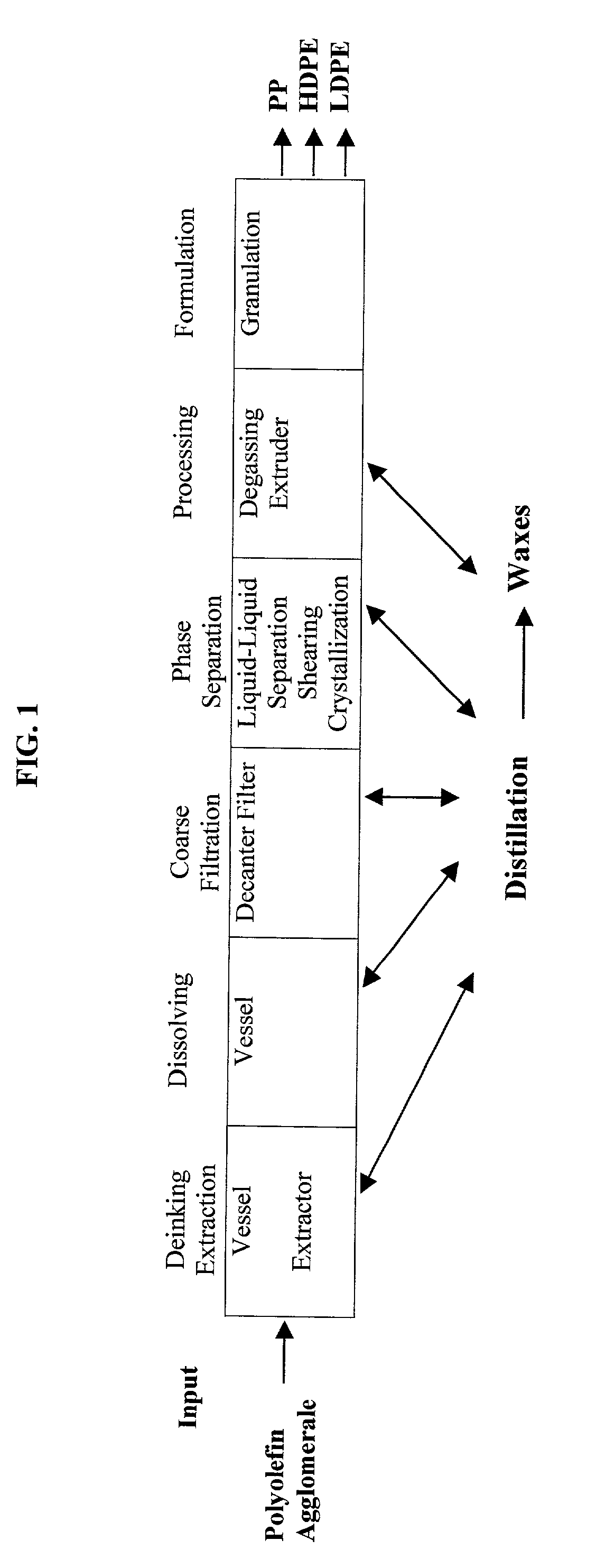Method for the production of a polypropylene blend
a polypropylene and blend technology, applied in the field of polypropylene blend production, can solve the problems of wax content, decomposition product, other impurities, interference with the recycling of collected plastics, etc., and achieve the effects of good constant mechanical characteristics, mechanical characteristics, and fast cycle times
- Summary
- Abstract
- Description
- Claims
- Application Information
AI Technical Summary
Benefits of technology
Problems solved by technology
Method used
Image
Examples
example 1
[0042] In the table below, the characteristics of a polypropylene blend produced in accordance with the invention are summarized.
1 PP blend produced according to method of the invention Property Standard / Procedure Average value Standard Deviation Yield stress (Mpa) ISO 527 32.8 1.8 Stretching elongation (%) ISO 527 8.3 0.8 Elongation at break (%) ISO 527 86.2 24.3 Tensile modulus of elasticity (Mpa) ISO 527 1.403 133 Impact strength 23 + / - 5.degree. C. (kJ / m.sup.2) ISO 179 3.9 0.1 Melt flow index MFR 230.degree. C. / 2.16 kg (g / 10 ISO 1133 16.3 7.2 min.) Melting Point (.degree. C.) ISO 3146 163.2 1.4 Oxidation Stability (min.) DIN EN 728 12.8 6.3 Molecular weight - Mw (g / mol) GPC 234,000 34,000 - Mw / Mn (g / mol) GPC 5.5 0.8 Polymer PP content (% by weight) DSC 95.8 1.4 Polymer PE content (% by weight) DSC 4.2 1.4 Wax content (% by weight) Extraction 2.4 1.1 Calcined residue (% by weight) ISO R 1270 0.09 0.09 Chlorine content (total chlorine %) 0.01 0.00
example 2
Comparative
[0043] A currently available method for recycling plastic packaging materials uses the beaker fraction following a float-sink separation and exclusively forms a polypropylene re-granulate that has poor characteristics compared with the new material. At a mfr 230.degree. c / 2.16 kg from 4 to 5 g / 10 min., The tensile strength lies at 30 to 40 n / mm.sup.2.
PUM
| Property | Measurement | Unit |
|---|---|---|
| Weight | aaaaa | aaaaa |
| Fraction | aaaaa | aaaaa |
| Percent by mass | aaaaa | aaaaa |
Abstract
Description
Claims
Application Information
 Login to View More
Login to View More - R&D
- Intellectual Property
- Life Sciences
- Materials
- Tech Scout
- Unparalleled Data Quality
- Higher Quality Content
- 60% Fewer Hallucinations
Browse by: Latest US Patents, China's latest patents, Technical Efficacy Thesaurus, Application Domain, Technology Topic, Popular Technical Reports.
© 2025 PatSnap. All rights reserved.Legal|Privacy policy|Modern Slavery Act Transparency Statement|Sitemap|About US| Contact US: help@patsnap.com

